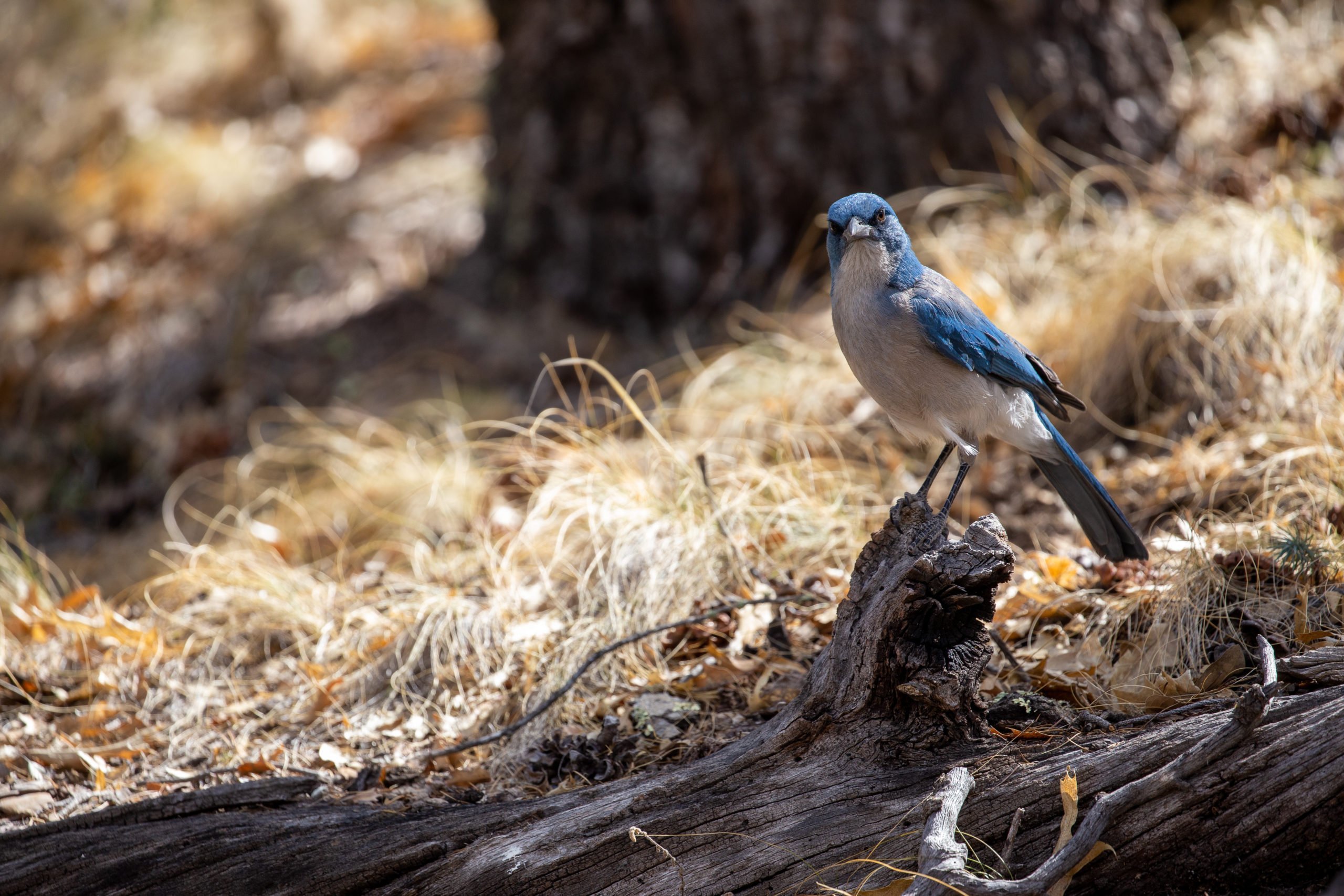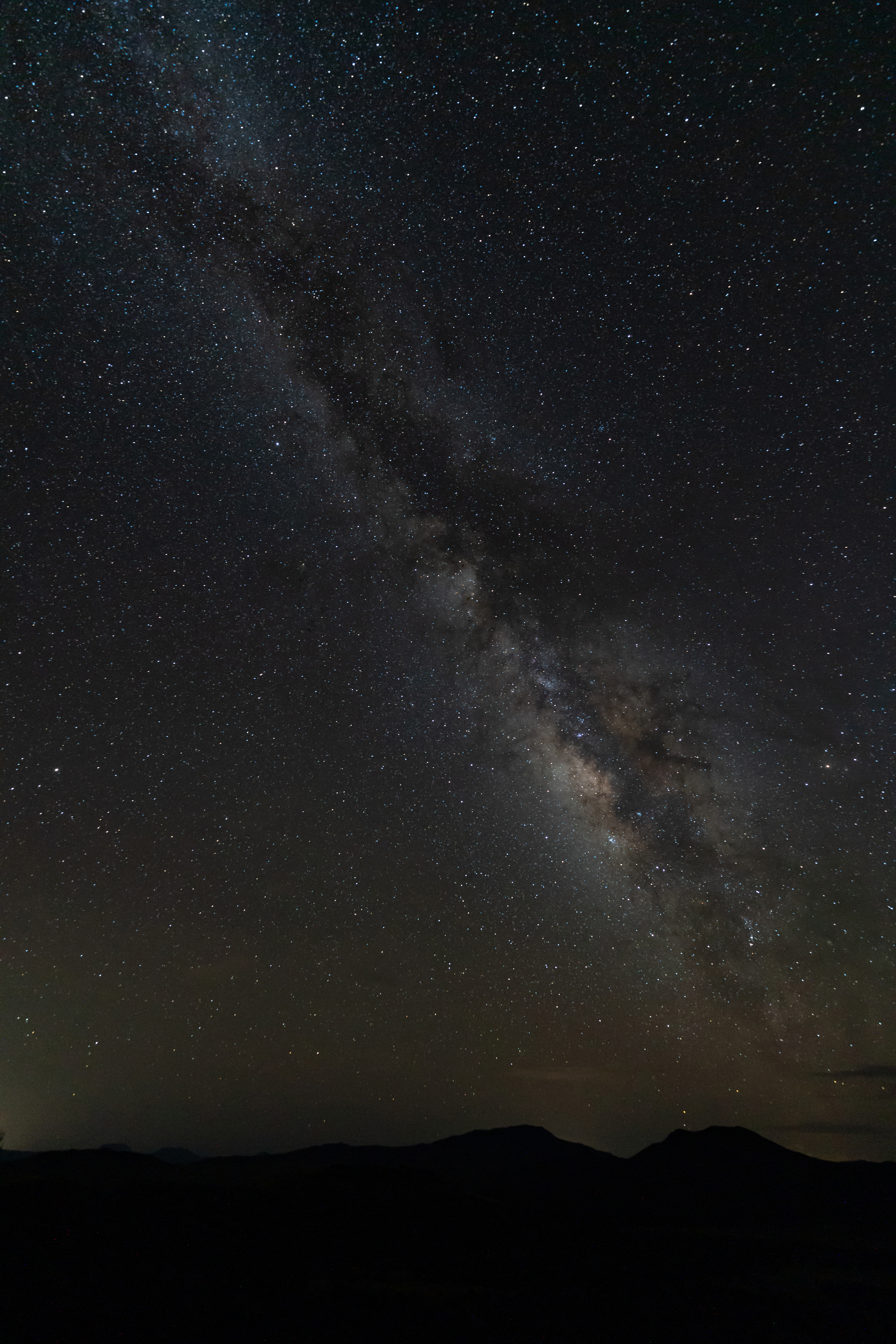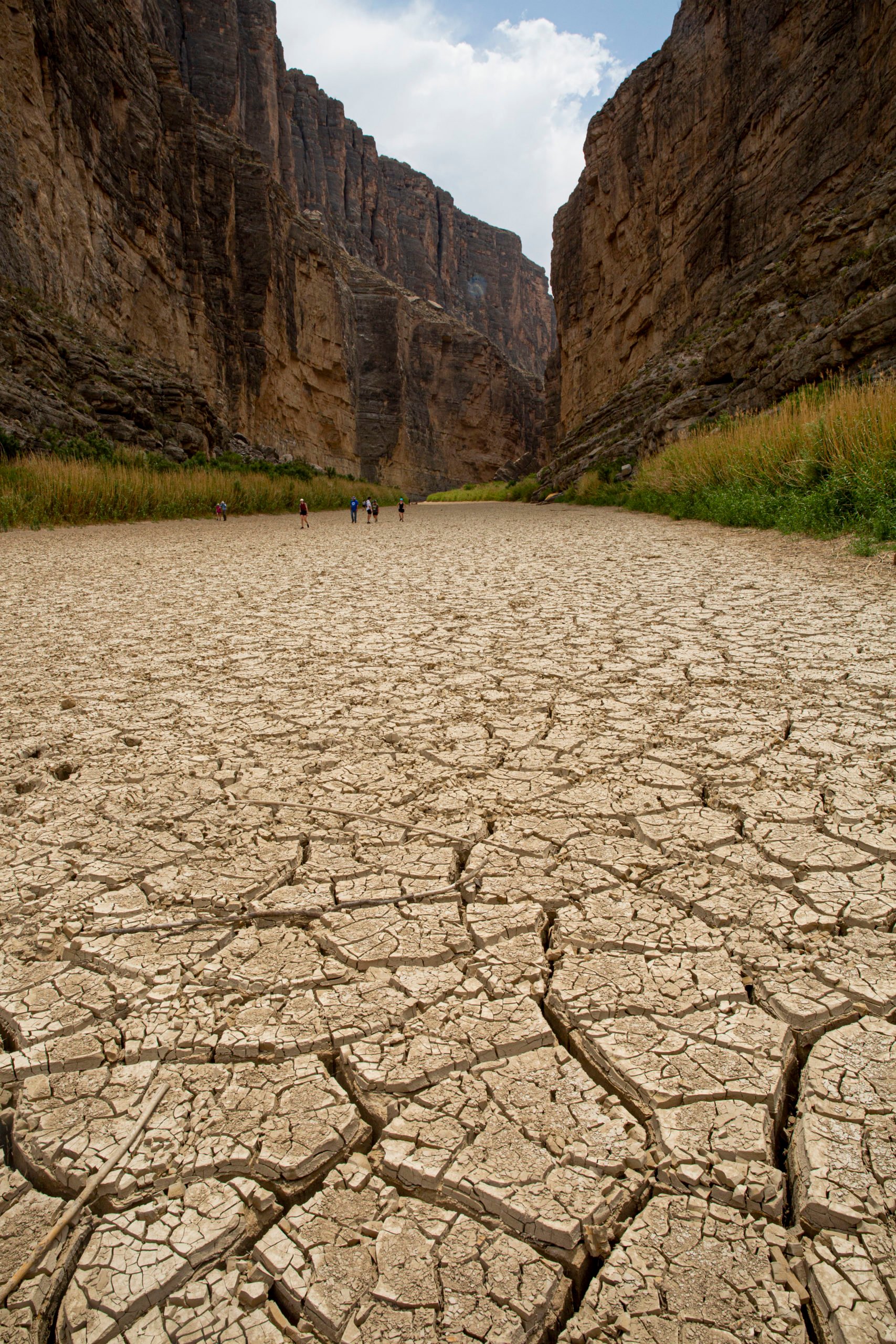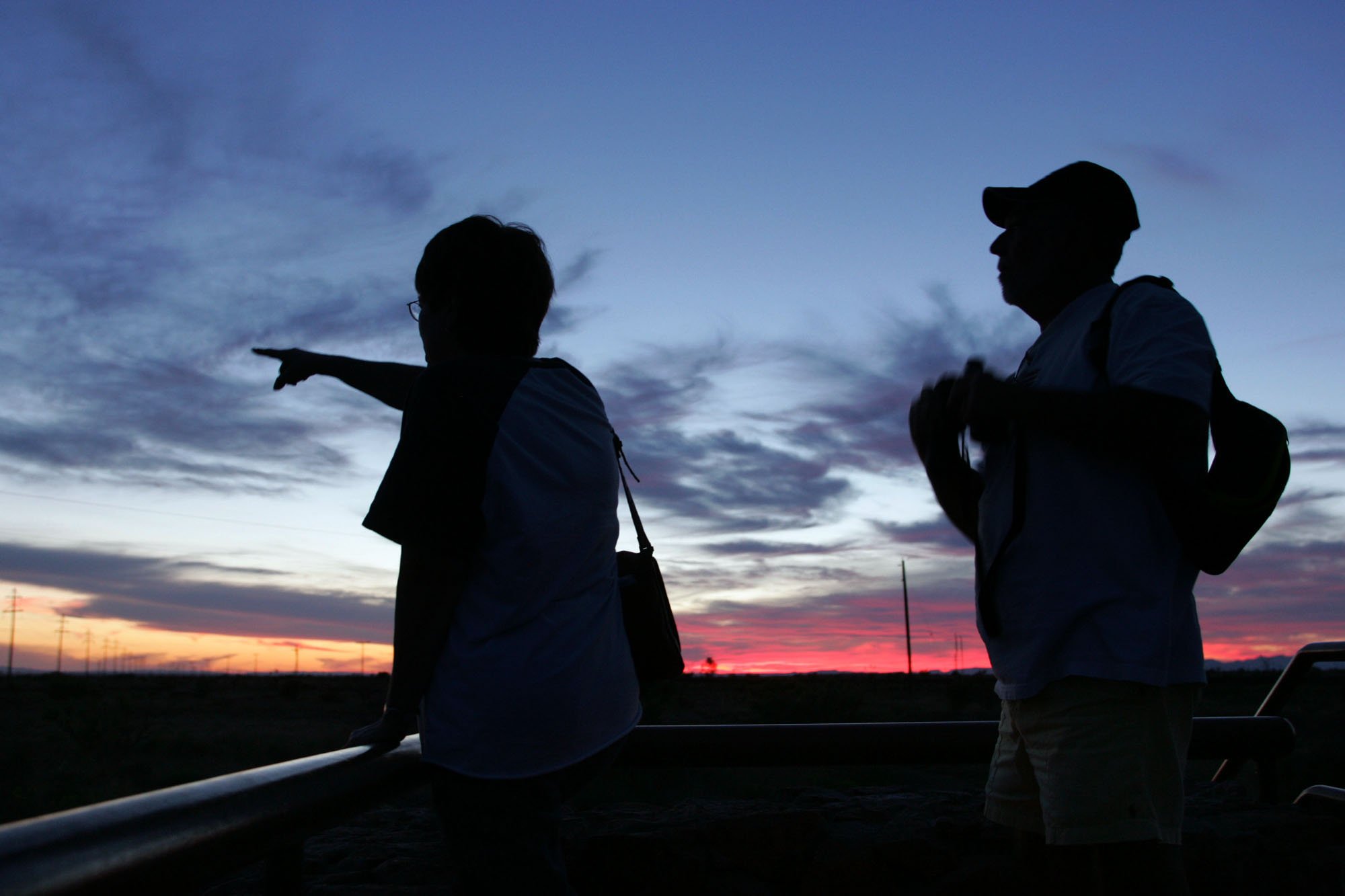The trip starts with a bang. A Common Poorwill, a bark-colored bird the size of your palm, jumps up from the narrow blacktop and sputters head-on into our pickup’s undercarriage. Lee Hoy, a wildlife guide with a long white beard and thick, black-framed glasses, is at the wheel, winding his truck along the dark road from Terlingua to Big Bend National Park in the early morning hours. “Dangit,” he mutters. Minutes earlier, Hoy had successfully avoided mowing another poorwill down. This time, he pumped the brakes and veered slightly, to no avail. “Didn’t jump up in time.”
The birds wait in the road until a car comes along, its headlights illuminating moths and other flying insects, Hoy says. When the oncoming vehicle is just feet away, the poorwill leaps up, snatches its prey out of the air, and zips over the car. At least that’s what’s supposed to happen. It’s a high-risk, high-reward hunting strategy. Sometimes that’s what it takes to survive here in this sprawling stretch of arid desert that eons ago was a shimmering sea. The Big Bend region, which encompasses the state and national parks that span more than 1 million acres, is situated on the Rio Grande, on the border with Mexico. All of the extraordinary and oddball creatures who call this place home—including mountain lions, black bears, kangaroo rats, javelinas, and gray foxes—have managed to carve their niche in this harsh landscape.
Jim Thul, a retired biologist from New Jersey, traveled here to see one in particular: the Colima Warbler, an elusive species that migrates from Mexico each spring to breed in the high peaks of the Chisos Mountains. This is the only place in the United States to find this yellow-rumped bird with a worldwide following. “It’s like a rite of passage. I mean, it’s famous,” Thul says from the back seat. He’s hired Hoy as a guide to help track down the warbler. If Thul sees the Colima Warbler today, it would qualify, in birding lingo, as a “lifer,” meaning it’d be the first time he’s ever seen that species in the wild. Thul’s “nemesis bird,” on the other hand—a common bird that nevertheless eludes an experienced birder—is the Rock Ptarmigan, a grouse that he still has not added to his list despite spending hours looking for it in Alaska.
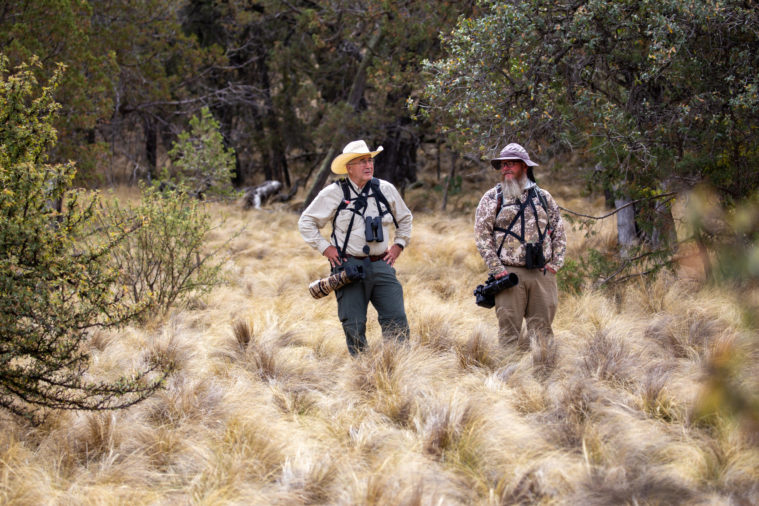
It’s 6 a.m. on this breezy April morning when we exit the truck and start navigating along the Laguna Meadows trail into the Chisos by moonlight. As the sun comes up, a bevy of birds emerge: Rufous-crowned Sparrow, Blue-gray Nuthatch, Spotted Towhee. Hoy picks each bird call out of a symphony. Seeing a Black-headed Grosbeak, a distinctive thick-billed songbird, is taken as a good omen. We spot bear dung on the trail, and Hoy recalls seeing mountain lions in the gully below the trail. Mountain lions and bears in Big Bend were nearly eradicated by hunters a century ago, but have returned to the park thanks to conservation efforts.
A few hours later, we hear the warbler’s call: “Seedle-seedle-seedle, sweet, sweet!” A hush settles over Hoy and Thul. “It’s calling out from the left,” Hoy says. “Holy crap.” They pull up their binoculars but don’t spot it immediately. “Let’s just give it a little bit and keep listening.” Minutes pass in silence, and eventually we continue on, 1,600 feet above the trailhead. We meet other birders, all eager to get a look at the warbler.
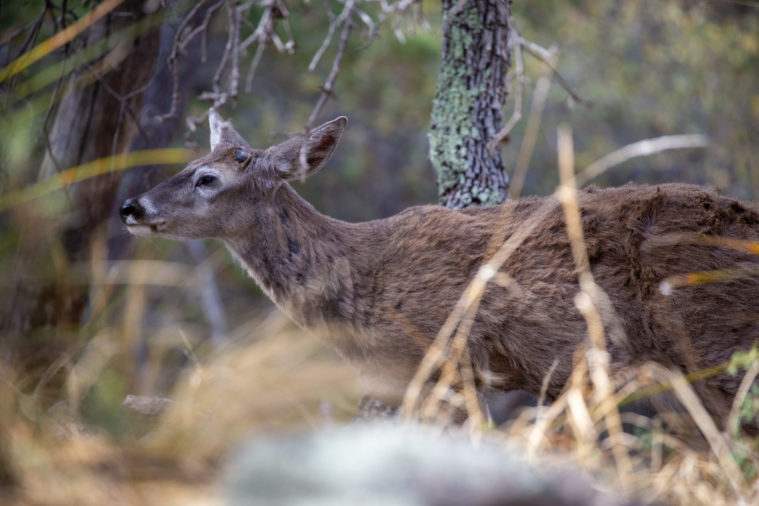
At the end of the trail, we spy a young Carmen Mountains white-tailed deer in the mottled understory light, his horns dull nubs, fur crumpled from molting. A family of Mexican jays, an electric-blue, mischievous bird that travels in packs and harangues backpackers for food, plays in an oak tree. After we catch our breath, the warbler sounds again back from the way we came, and we race down to find it.
Long before the first birds streaked across the skies of Big Bend, this stretch of Chihuahuan Desert west of the Pecos River was in a state of constant motion. Fifty million years ago, it was covered by vast, shallow seas. Dinosaurs stomped around, leaving footprints that are still being discovered today.
The Chisos mountain range was formed 30 million years ago, relatively recently in geologic time. At that time, the tectonic plate underriding the Pacific Ocean was sliding underneath the North American plate, pushing massive blocks of earth skyward and spurring a rush of volcanic activity. Volcanoes smothered the place in ash and lava, forming the rough structure of the Chisos. Belching volcanoes around the globe gave rise to an Ice Age; massive glaciers were formed in what would later become the United States’ northern reaches. When they melted, the ancient drainage channels streamed through Big Bend, carving the iconic mesas we see today and forming the Rio Grande.
Pat Dickerson, a geologist at the University of Texas at Austin who specializes in the evolution of West Texas and the Southwest, says those ancient drainage channels defined the movement of pronghorn, pumas, and other mammals. It also created the western North American Flyway, a migratory corridor where birds travel from as far away as South America and Canada to feed, breed, and nest. “It’s such a marvel to be able to see the variety of birds that span that whole belt of country and move back and forth annually in this corridor,” she says.
In the United States, modern birding took flight, as it were, with the publication of Birds Through an Opera Glass, the first field guide for birding in North America. The trend gained traction with the Migratory Treaty Act of 1918, a federal law banning the killing of roughly 1,100 migratory birds, some of whom were hunted to near-extinction for their colorful feathers—a favorite decoration for hats. The Audubon Society was also formed in the early 20th century to advance protections for wild birds. The modern way of birding, which can include extensive documentation of species and worldwide travel to see rare birds, piggyback on those conservation efforts, says Romey Swanson, director of conservation strategy at Audubon Texas. “We can use these charismatic, recognizable species to help tell the stories of landscape, whether it’s land fragmentation, climate change, any number of issues,” Swanson says.
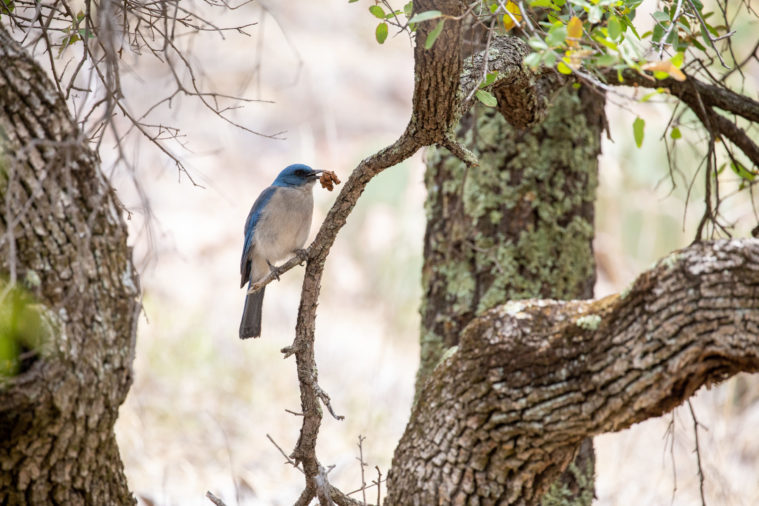
The activity of “birding,” which implies more active involvement in the hobby than birdwatching, is a relatively new invention, says Carolyn Ohl-Johnson. At 80 years old, she operates a bird sanctuary a few miles north of Big Bend National Park, as the crow flies. “When I was a kid, I didn’t know birding was anything but a child’s game,” she says. Ohl-Johnson grew up in a blue-collar farming community in Iowa where people were too busy working to pay much attention to birds. Now, Ohl-Johnson is the top birder in Brewster County, where her deep stock ponds and constellations of bird feeders draw in the exceedingly rare Lucifer Hummingbird, among other elusive species.
Today’s birders tend to keep track of how many individual species they’ve seen and sometimes compete with other birders for a “high score.” Swanson’s record is 425 species in a single year, a large portion of the roughly 650 species that live in or migrate through Texas. Only a handful of people have ever seen more than 500 of them. Swanson describes the activity as a sort of scavenger hunt. Some birders will challenge themselves to see how many birds they can spot in a given year, but birding can also be as simple as setting up a bird feeder and seeing what shows up.
The Lone Star State is regarded as one of the nation’s top birding destinations, and with good reason: The Gulf Coast attracts a dizzying array of water-loving birds, including the endangered Whooping Crane, which winters in small groups in a wildlife refuge near Rockport. The Rio Grande Valley is home to the Green Jay, Buff-bellied Hummingbird, and Ringed Kingfisher. But no other place in Texas is as rich in avian biodiversity as Big Bend, where a complex geological and evolutionary history has created a birding mecca that rivals any other place in the world.
For many, the region’s most spectacular geological feature is the smattering of “sky islands” within the Chisos, Davis, and Guadalupe mountains, surrounded by hundreds of miles of unforgiving desert. At a bird feeder in the Davis Mountains, about two hours north of Big Bend National Park, conservationist Cecilia Riley spots a number of island denizens carousing for a meal. Black-chinned hummingbirds flit around sugar-water feeders. A brilliant red-and-yellow Western Tanager swoops down to peck at a peanut butter treat. There’s a bulky rock squirrel loitering underneath one of the feeders, waiting for some errant seeds to fall to the ground. The drab rodent lives only here, in the sky island—unlike other squirrels, it does not climb trees, opting to spend much of its time underground.
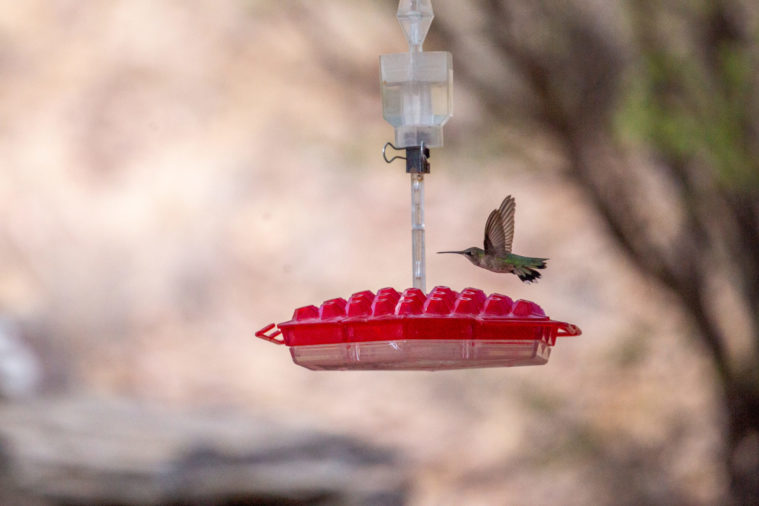
The return of the Turkey Vulture marks the beginning of spring in the Davis Mountains. Winters here can be harsh, prompting the vultures to flee to Mexico. Then, each March, they return like clockwork. “Everyone gets excited when the turkey vultures come back,” Riley says. “And not just the birders.” One vulture circles above us as Riley powers her sedan up a steep slope to an observation deck inside the park. We see an overgrazed ranch pasture being reduced to bedrock before our very eyes, a howling wind sweeping dirt from the surface into a brown hazy sky. Riley sighs. “Desert ecosystems are very, very fragile. People don’t realize that, and they take a long time to recover.” This is bad news for the vultures and other creatures who rely on a healthy ecosystem to survive; it could take decades to correct the mass removal of soil from this and other pastures, she says.
In 2020, parts of the Davis Mountains received only 7 inches of rainfall, about half of the annual average. As of this spring, the area had received a mere quarter-inch of rain. Riley, who is the president of the nonprofit Trans-Pecos Bird Conservation, tried to persuade locals to put out water for songbirds to help them through the tough time. Luckily, the drought broke this summer, when Fort Davis clocked a whopping 8 inches of rainfall from May through mid-July.
Climate change has driven unusually wet and dry periods—both of which can contribute to outsized wildfire seasons—in Texas and across the nation. As climate change continues, scientists predict more heatwaves and fires. Big Bend’s spring drought may have exacerbated a 1,340-acre fire near a popular camping spot in the Chisos Mountains in April, just weeks before our hike. It was the largest fire to hit the high country of the Chisos since 1903, according to the National Parks Service. The fire, which rangers say was likely caused by humans, smoldered for weeks. Annie Gilliland, a supervisory park ranger in Big Bend, says the fire caused “significant damage” to Colima Warbler habitat. The oak trees used by the warbler for foraging were mostly spared, however, and it has since been spotted in the burned areas.
Back on the quest for the colima warbler, we’ve struck out again. We take a break on the trail and meet two other birders, Rondi Large and O.T. Sanders, a married couple from Central Oklahoma. Earlier today they saw the warbler at the nearby Pine Canyon Trail. Before retiring, Large ran an animal rehabilitation center in Oklahoma; her fondness for animals is matched only by her anger toward those who hurt them. She relates a story of how she once saw a pickup in front of her swerve intentionally to hit a turtle that was trying to cross the road. She chased the driver down. “Does that make you feel like a man to kill a poor defenseless creature?” Large told him. Then to us, “I can curse like a sailor.” Then she mentions seeing a dead poorwill in the road into the park this morning. Hoy fesses up: “That… that may have been me.”
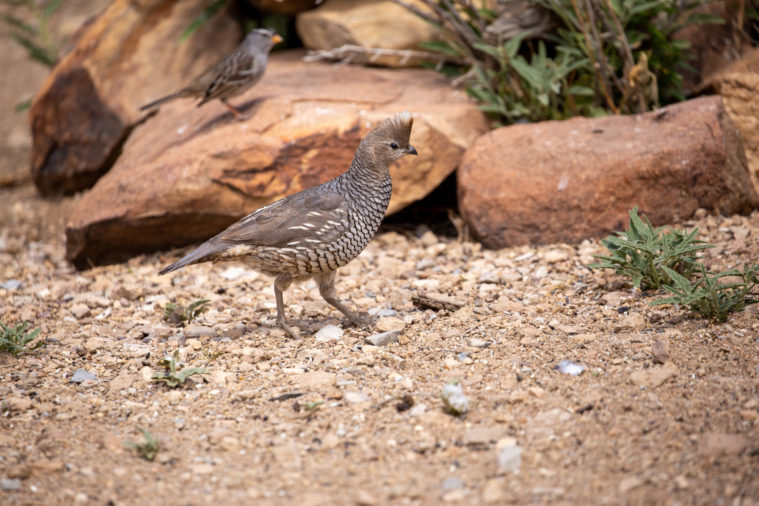
Our conversation is cut short by another “seedle-seedle-seedle, sweet sweet!” We sprint to the sound, but it’s another miss. A warble with no warbler.
The hike begins to take on a sort of urgency. Hoy doesn’t have many misses on his tours. He’s getting frustrated. “Oh, c’mon, birdie,” he pleads. “Sometimes it makes it more frustrating to hear them but not see them.”
Twice more we chase its call. Then we never hear it again.
Back in the car, Hoy asks Thul if he’s disappointed. “No,” he says. “I survived the hike. We had four crystal-clear vocalizations. I can live with that.” Better yet, he has stories to tell his grandson, who once said he wanted to grow up to be a Western Kingbird. Sore and sunburned, we drive the bumpy desert road back to Terlingua. And this time, we don’t hit a single poorwill.
